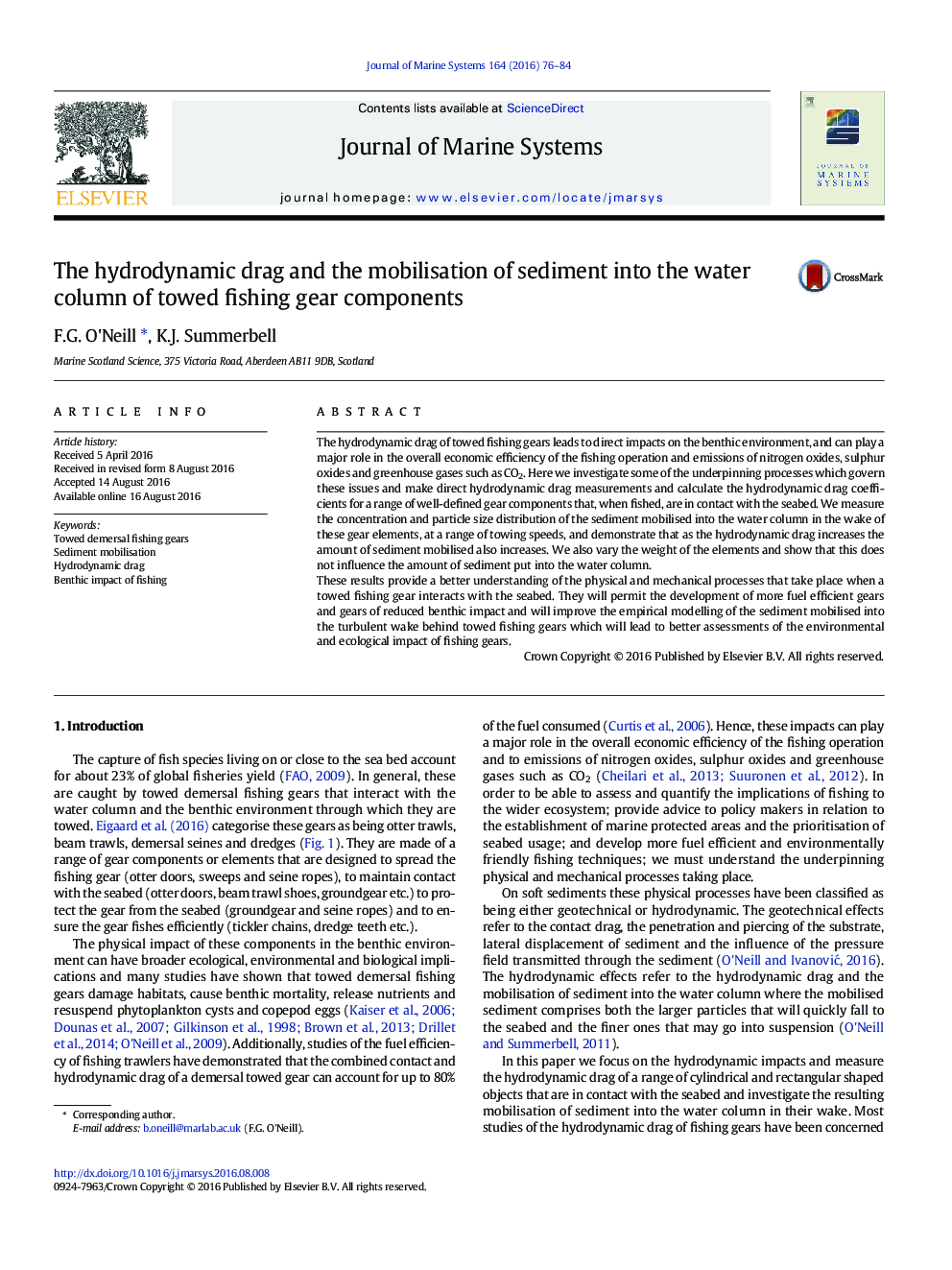| Article ID | Journal | Published Year | Pages | File Type |
|---|---|---|---|---|
| 4547844 | Journal of Marine Systems | 2016 | 9 Pages |
•We measure the hydrodynamic drag of a range of well-defined fishing gear components.•We measure the concentration and particle size distribution of the sediment mobilised.•The weight of an element does not influence the amount of sediment mobilised.•The amount of sediment mobilised increases as the hydrodynamic drag increases.
The hydrodynamic drag of towed fishing gears leads to direct impacts on the benthic environment, and can play a major role in the overall economic efficiency of the fishing operation and emissions of nitrogen oxides, sulphur oxides and greenhouse gases such as CO2. Here we investigate some of the underpinning processes which govern these issues and make direct hydrodynamic drag measurements and calculate the hydrodynamic drag coefficients for a range of well-defined gear components that, when fished, are in contact with the seabed. We measure the concentration and particle size distribution of the sediment mobilised into the water column in the wake of these gear elements, at a range of towing speeds, and demonstrate that as the hydrodynamic drag increases the amount of sediment mobilised also increases. We also vary the weight of the elements and show that this does not influence the amount of sediment put into the water column.These results provide a better understanding of the physical and mechanical processes that take place when a towed fishing gear interacts with the seabed. They will permit the development of more fuel efficient gears and gears of reduced benthic impact and will improve the empirical modelling of the sediment mobilised into the turbulent wake behind towed fishing gears which will lead to better assessments of the environmental and ecological impact of fishing gears.
